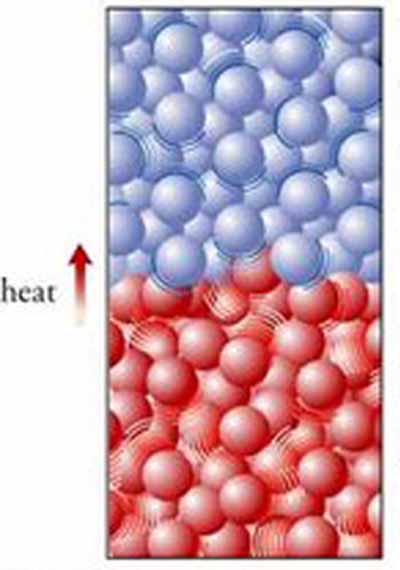
There are three modes of heat transfer:
- Conduction.
- Convection.
- Radiation.
Conduction is process by which heat is transferred by direct contact between an object at a higher temperature to one at a lower temperature. Conduction is the transfer of energy through the collisions and vibrations of molecules and atoms. The temperature of molecules is related to their velocity.
The term
convection is often used to describe heat transfer that occurs between an object and a fluid flowing across it. Convection is, in essence, a type of
conduction. In convection heat is transported mostly by the movement of material, rather than by conduction. Convection in the Earth's mantle is the transport of heat by motion of the mantle. In turn, the distribution of temperature leads to density instabilities (via the coefficient of thermal expansion), which drive the mantle flow.
The simpler process of
advection is heat transport by the movement of material without considering the feedback process of the redistribution of temperature affecting the velocity of the material. “Wind chill” is a good example of the advection process. In the Earth's mantle, the advective transport of heat (due to the velocity term) is the dominant way that heat is transported.
The third way an object’s internal kinetic energy and temperature are increased is by exposure to
radiant energy, such as the energy coming from the sun. The radiant energy is converted to kinetic energy of the particles in the object. This is why we get hot in the sun.

